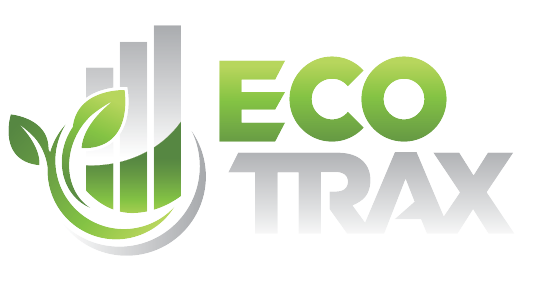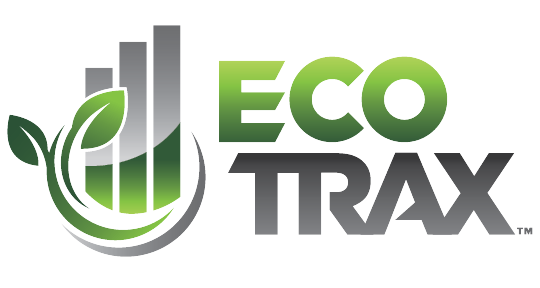Bob Whitmore is a distinguished expert in supply chain distribution with 39 years of rich experience. He has successfully managed over sixty projects, including twenty construction ventures, and has been integral in the evolution of various distribution centers and warehouse management systems.
EcoTrax: So, Bob, how do you define the role of a distribution center in promoting and implementing a circular supply chain?
Bob: In my view, the Distribution Centers will continue to expand to play an even bigger role in promoting circular supply chains. We have seen trends over the past several years to drive more “local” supply chains for better customer response times. The last-mile supply chains do not necessarily need to be viewed as one-way. We can reimagine how operational by-product materials such as plastic, paper, pallets, or even organic waste can be reclaimed through reverse logistics in a circular supply chain to benefit all environmental and economic stakeholders. I am not saying that it will be an effortless process. There are long held corporate paradigms and business practices that will need to be reimagined before the promise of circular supply chains can be fully realized.
EcoTrax: Seems straightforward enough. What are some early obstacles that you had to overcome?
Bob: What we are talking about here is change management. With Sustainability taking a more prominent place in corporate boardrooms, it is likely that the corporate executive suite is driving any local distribution center initiative. The commitment to circularity needs to ring true in both words and actions. With the required people and financial resources to support the circularity initiatives, I am confident that there will be more than enough ROI to generate positive economic and environmental impacts. It is also important to recognize that distribution centers are space constrained and will need to be reengineered in a way that allows for the seamless flow of circular materials. In a distribution center environment, more touches = more cost.
EcoTrax: Can you describe a situation where you had to innovate or significantly alter processes in the distribution center to better fit into a circular economy model?
Bob: The distribution center is in a perpetual state of innovation and change. As distribution leaders, we are always expected to do more with less. So, in a way, it is part of our DNA to be thinking about ways to get more done without adding any additional costs. With respect to supply chain circularity, I realized early on that we needed a process to track both the inbound and outbound of the supply chain recyclables/reusables. So, we embarked on a project to measure materials such as pallets, OCC, and plastic, from specific vendors for both the in-bound and returns. We had pool pallets from up to four different vendors and were able to segregate them without significant additional handling. We were also able to use the data analytics from the program to protect our company from additional fees from supply-chain leakage or simple reporting discrepancies.
EcoTrax: How do you measure the success or impact of the distribution center’s practices in contributing to a circular economy?
Bob: As we discussed, distribution centers have an almost singular focus on operational efficiency. Over the years, I have applied the principles of LEAN (and its predecessors) to focus on the elimination of waste in every area of distribution center operations. For example, we set targets for energy use by key area and adopted kilowatt hours as the proxy vs spend. We did this because we could control the amount of power used vs the $ spent for a utility commodity. We did the same for all the other areas where waste leakage (e.g., materials, utilities, water, organic waste,) was occurring. We also worked to establish local networks for composting, food-waste diversion, and donation.
The longer-term goal is to minimize the need for any landfill waste. We established annual targets and established milestone performance criteria. While we are still relatively early in the circular supply chain journey, many companies are making substantial progress against their circular supply chain objectives.
EcoTrax: In what ways does technology play a role in enabling the distribution center to meet circular economy objectives?
Bob: My view is that technology will be the critical enabler for circular supply chains. A truly circular supply chain is not just about landfill diversion. It is also about transparency and traceability. In the ideal, the technology will provide additional safeguards from both waste and supply-chain shrink. The data analytics capability will include all movements with immutable tracking and traceability. It is important to design a system to check both inbound and outbound movements of materials and recyclables and MRO. This allowed us to track the commodity materials that were generated by the distribution centers. It will also be important to understand what additional labor and floor space will be needed to successfully deploy the technology.
EcoTrax: What strategies did you employ to educate and engage your staff about the importance of the circular economy in your operations?
Bob: A mindset shift is critically important. This question brings me back to my comment about the need to see circular supply chains as a meaningful change management program. Circularity needs to be communicated across all levels of the organization and needs to be a visible performance metric for the entire organization. It is important to find common ground with your employees and help them to see why this is so important. People want to do the right things when it comes to the environment. We just need to keep it simple and focus on the areas where we can make the biggest difference.
Direct fulfillment activities, such as processing, packaging, and shipping orders, are tangible and directly tied to the service provided, making it easier for customers to perceive their value and, potentially, to pay a premium for value-added services like sustainable packaging. However, indirect costs—those associated with overhead, administration, and the broader stewardship initiatives like recycling and reusing materials—present a more challenging proposition. Distribution Center managers are increasingly urged to adopt circular economy principles, aiming for zero waste and the reclamation of materials. Yet, without adequate budgetary control or accounting practices that recognize the residual value of shipping materials or the
true cost of diverting waste streams, implementing such measures can seem financially untenable.
And we know that customers often express a preference for sustainable products, but their purchasing decisions frequently prioritize cost over sustainability. This dichotomy between expressed values and actual purchasing behavior underscores the need for a shift in how value and costs are perceived and accounted for in the supply chain. To bridge this gap, it’s crucial for businesses to transparently communicate the long-term benefits of sustainability—not just in environmental terms, but also in economic savings, and the distribution center management team needs both the financial and human resources that support the new reality.
EcoTrax: Looking forward, what changes or advancements do you foresee as necessary for distribution centers to contribute to a circular economy more effectively?
Bob: I’d like to think that in the future business model, companies will operate on the principle that every stakeholder plays a vital role in the lifecycle of the product. This will mean that from the moment a product is conceived, through its use, to the eventual recovery or recycling phase, every participant contributes to its journey. This collaborative approach will ensure that while everyone benefits from the product, they also share in the responsibilities associated with its distribution and recovery. Today the distribution costs are factored into the cost of goods sold (COGS), underlining the financial contribution of distributors. In the future, when it comes to the return or recovery process, this responsibility and financial benefit will accrue back to the distributor, ensuring a sustainable loop of product lifecycle management. This system will not only optimize operational efficiencies but will also support the commitment to sustainability and responsible resource management.
About EcoTrax
EcoTrax is a technology-enabled supply chain solutions company focusing on a mission-critical yet under-resourced area of supply chains – the recyclables, reusables, and waste produced by distribution centers. Our purpose-built platform and team of industry experts deliver solutions that increase the value and sustainability performance of recyclables (pallets, OCC bales, plastics, food waste) while simplifying and modernizing the management of returnable containers (totes, pooled pallets, etc.). We digitally integrate and synchronize all internal stakeholders and external partners and automate workflow through a single platform. This single point of truth reveals real-time, actionable data and insights, reducing environmental impact while improving fiscal performance.


